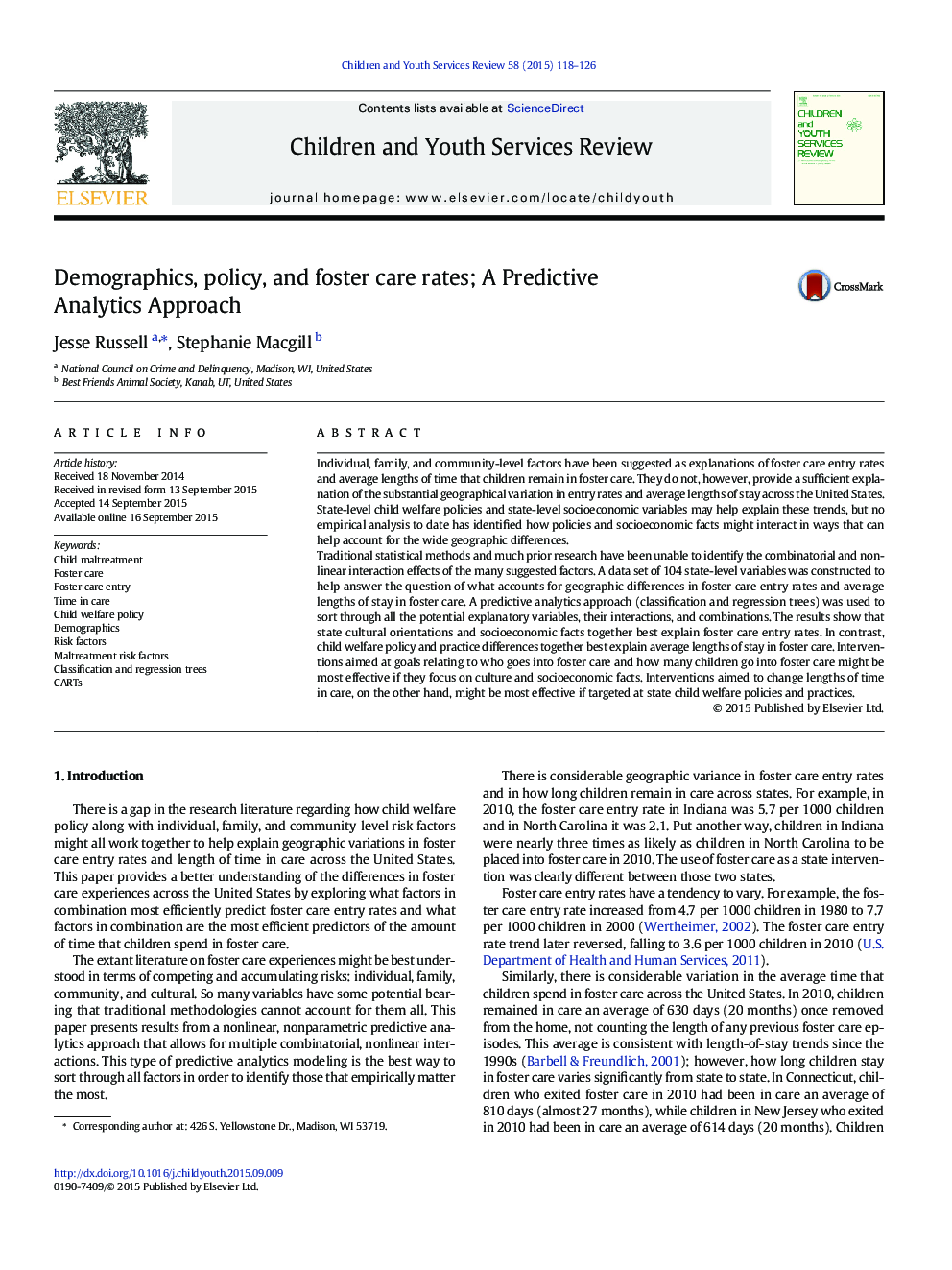| Article ID | Journal | Published Year | Pages | File Type |
|---|---|---|---|---|
| 345925 | Children and Youth Services Review | 2015 | 9 Pages |
•We model state-level foster care entry rates and average lengths of stay in care using Classification and Regression Trees•The models account for 104 state-level variables, focusing on policy and socioeconomic factors•Cultural orientations and socioeconomic facts together best explain foster care entry rates•Child welfare policy and practice differences together best explain average lengths of stay in foster care
Individual, family, and community-level factors have been suggested as explanations of foster care entry rates and average lengths of time that children remain in foster care. They do not, however, provide a sufficient explanation of the substantial geographical variation in entry rates and average lengths of stay across the United States. State-level child welfare policies and state-level socioeconomic variables may help explain these trends, but no empirical analysis to date has identified how policies and socioeconomic facts might interact in ways that can help account for the wide geographic differences.Traditional statistical methods and much prior research have been unable to identify the combinatorial and nonlinear interaction effects of the many suggested factors. A data set of 104 state-level variables was constructed to help answer the question of what accounts for geographic differences in foster care entry rates and average lengths of stay in foster care. A predictive analytics approach (classification and regression trees) was used to sort through all the potential explanatory variables, their interactions, and combinations. The results show that state cultural orientations and socioeconomic facts together best explain foster care entry rates. In contrast, child welfare policy and practice differences together best explain average lengths of stay in foster care. Interventions aimed at goals relating to who goes into foster care and how many children go into foster care might be most effective if they focus on culture and socioeconomic facts. Interventions aimed to change lengths of time in care, on the other hand, might be most effective if targeted at state child welfare policies and practices.
